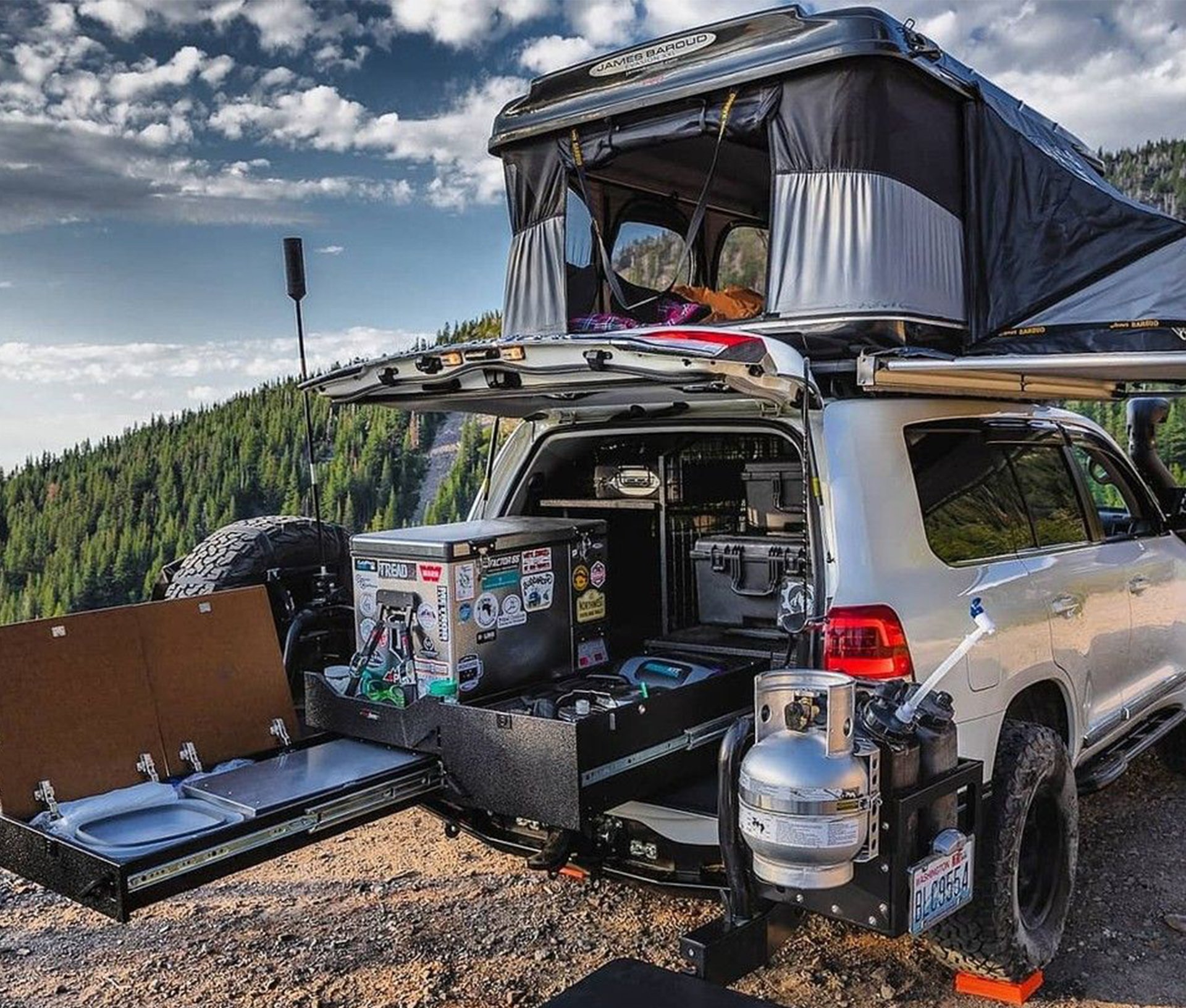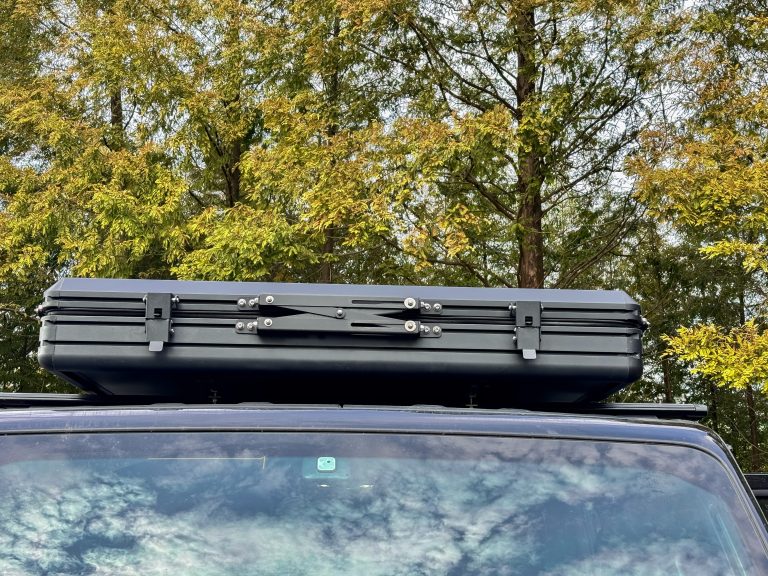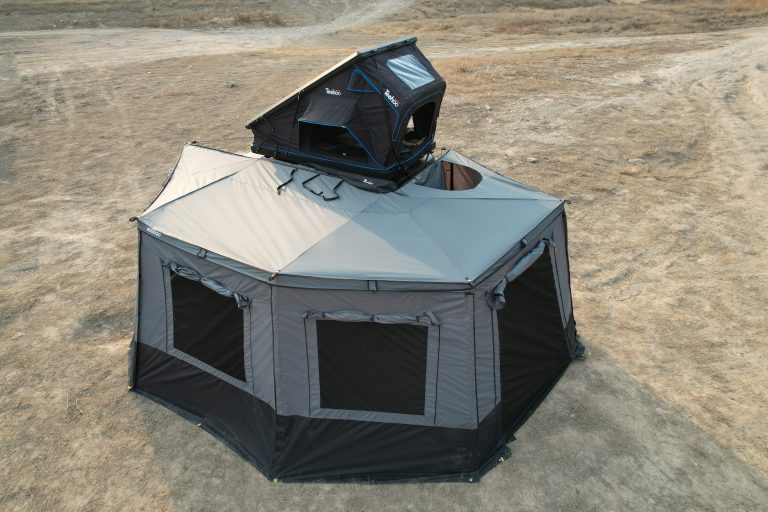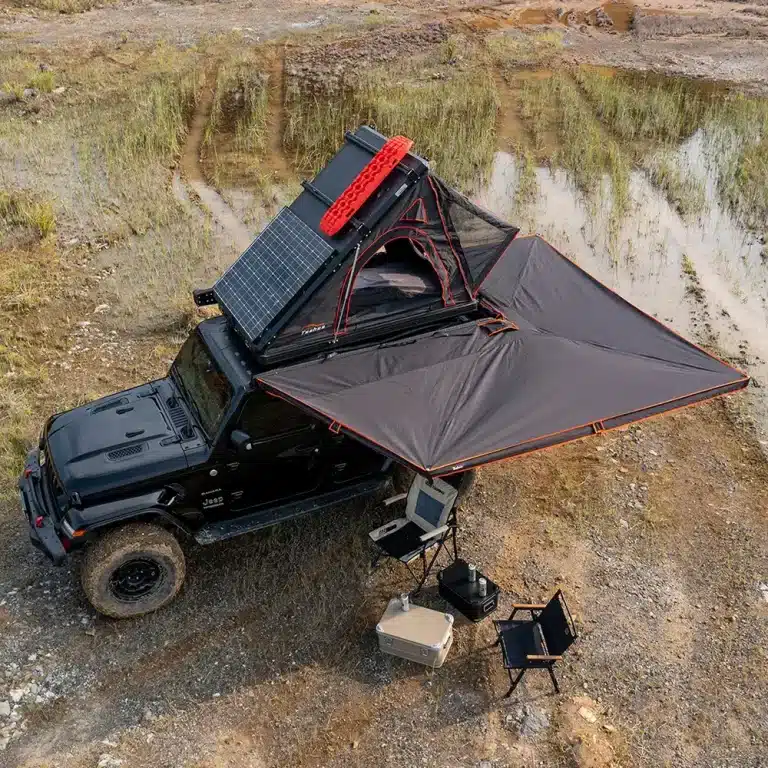
Guide For Overlanding Beginner
With the development of the overlanding boom, more and more novices have joined the overlanding family. But most of us is just like a blank page and probably got millions of questions rolling around in our head.
- What kind of vehicle do I need?
- If I’ve got the right gear, which brand is best?
- How to make a perfect plan for a long trip?

First, what is overlanding? Generally speaking, overlanding is a combination of remote travel, off-roading, and camping. … Other characteristics that define overlanding include, but are not limited to, self-reliance, adventure, survival, and discovery. It requires a lot of preparation to pull off an expedition of any length into the backcountry. Here is some basic tips for overlanding beginner.
1. Get a right vehicle
The first step for overlanding is to choose or modified a suitable vehicle. It seems that a 4WD vehicle is the best choice for overlanding. With a 4WD vehicle, its engine power is able to be distributed across each of its four wheels, which allowing each wheel to gain its own traction. This feature is incredibly important for whatever terrain we plan to drive. And the vehicle’s ground clearance– the higher it has, the easier it is to drive over rough or uneven terrain. More ground clearance also means added protection to its undercarriage, as things like jagged rocks or tree branches are less likely to scrape underneath. The ground clearance could be improved by proper suspension, bigger tires and so on. When it comes to suspension, the right system could spell the difference between completing our overlanding trip. This is due to the fact that overlanding is anything but a smooth ride, and we want our vehicle to be able to handle every bump along the trail. A good suspension also means we won’t be bouncing around inside the rig all day. Special tires called all-terrain tires which match to overlanding will be bigger and stronger. These tires will be harder to puncture due to the thicker rubber, also driving more smoothly in rainy and snowy weather for its pattern.
The right vehicle should offer plenty of cargo space for long term trip, too. we need many things for a regular overlanding, like cooler, kitchen, food and water. What’s more, if we are planning to have a 10- day trip, repair outfit and power are necessary, too. we might think, “But my vehicle’s not a true off-roader!” Overlanding is a lot more than just off-roading. In fact, on a lot of long overlanding trips, we’ll probably be driving more on paved and smooth dirt roads than we will on rocky, muddy trails. Let’s assume that we at least have a SUV like a Forester, or CR-V, preferably with some all-wheel drive options. Sure these aren’t made for rock-crawling, but they’ll go 95% of the places we’ll want to go after modified like what we talked.

2. Overlanding gear
We need pack necessary camping gear for a basic overlanding trip.
Tent: It could be either ground tent or rooftop tent, it depends on the vehicle that we have. But if we like camping by the river or it will be rainy during camping, a rooftop tent will be better than ground tent. A lot of snakes, spiders, and ants wanting to join us in the tent. So a reliable rooftop tent is the best way to get away from these. As a beginner, a soft shell rooftop tent will be a good choice. If we don’t know which brand is better, just choose the most famous one in our country, like ARB in Australia or Smittybilt in US. A local brand in the city is not bad, too. They may offer better service and price than famous brands. All the soft shell rooftop tent are almost the same, so just choose the one that we like.
Kitchen: Camp stove, cups, reusable cutlery, sponge, paper towels, plates and bowls. These are basic items for overlanding kitchen, we could get them on Amazon or Walmart. If we choose a propane stove instead of classical stove, remember to take extra gas tanks if we are going to have a long trip.
Cooler: A suitable cooler is really important for overlanding beginner, we need to store all the food in it. So a good cooler will help us keep food fresh during the trip. We may put fruits, vegetables and drinks for the trip, it’s due to the meals that we want. Cooler’s price is about tens of dollars unless we’d like to pay for famous brand. Maybe Yeti or Pelican, then the price will be three or four times higher. When we driving farther away, it’s time to choose a update product than cooler——portable fridge freezer. This product will keep our food fresh longer than cooler and no ice needed. Also we could take ice-cream or something frozen with a fridge, that’s awesome for hot summer. How to choose a suitable portable fridge freezer? Here is the links for some tips:
GPS Device: If our smartphone has replaced the standalone GPS now? No, of course not. When we are driving in rural areas for overlanding trip, where data coverage is sketchy, we may have found that we were unable to get directions through our phone, perhaps forcing us to resort to a paper map or even stop and ask for directions. Similarly, on overlanding trips, we may have found that our phone depleted its battery too quickly. With goodies like free traffic reporting, lifetime map updates, and local search now commonplace, today’s GPS devices can do a lot more than they ever have, and they’ve never been more affordable—thanks to the competition between smartphone and standalone GPS. The good news is that we’ve got two major brands in the market now: Garmin and Tom Tom, these brands have received top ratings from us in the past, and the models we recommend here are their most popular, with the best customer ratings.
Extra: These items will be helpful for our trip,too. MaxTrax recovery, compass, maps, emergency and first-aid kit, shovel, LED lights, tow straps, extra gasoline, solar panel or Hi-Lift jack…….

3. Get a plan before trip
Time:
The first thing to do when planning our first overlanding trip is to determine would be how much time we have to spend. This way, we can focus on the areas that will be reachable within our timeframe.
Consider how long it will take for us to get there and gather up information on how long the trail we are planning on doing will take. we should also keep in mind that the exit of the trail might be further away from home than the entry. Therefore, adequate time to get back to base is required.
Location:
We should choose an area that intrigues us for our overlanding trip. Don’t just have places we are already aware of as options though. Nowadays, we can head on forums and groups where endless information is available. People are willing to share stunning places and ready plotted routes to get there.
Resources:
Before each time to hit the road, we need study for the location we’re heading to including the drive route and where we’re able to stop and get gas. If the area has markets and grocery shops, pack up less – it will help keep the weight of your rig down.
Weather:
We also need to be familiar with the area’s seasonal weather. Is there a chance we’ll get into snow or rain? If yes, carry chains and the appropriate recovery gear is necessary. And Always keep some warmer clothing and gloves in the trunk just in case the forecast got it completely wrong.
Then we could begin our first overlanding trip. Remember we can never do research for everything, so start the first trip after these basic items are done might be the best way. we could make a list for what we need during or after the first trip, what will make our next trip better, more food, extra power and so on. This will help we get a better trip next time.
Once we are on the overlanding trip, don’t forget enjoy it. That’s the meaning of overlanding, take wonderful photos, stay with our family and explore the backconutry.



